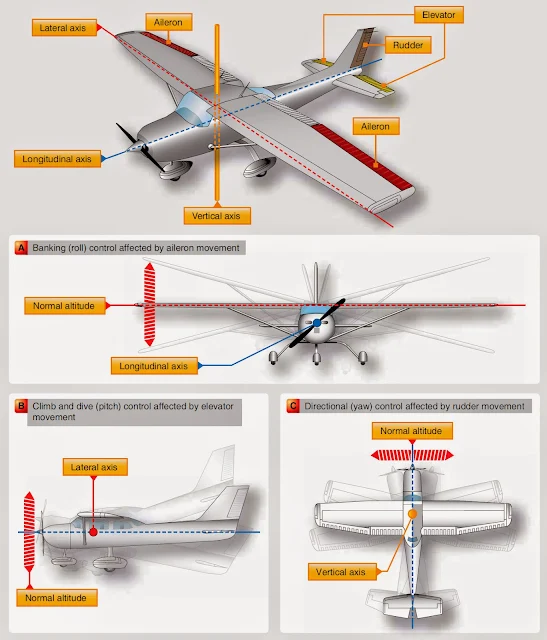The primary controls are the ailerons, elevator, and the rudder, which provide the aerodynamic force to make the aircraft follow a desired flight path. [Figure] The flight control surfaces are hinged or movable airfoils designed to change the attitude of the aircraft by changing the airflow over the aircraft’s surface during flight. These surfaces are used for moving the aircraft about its three axes.
Typically, the ailerons and elevators are operated from the flight deck by means of a control stick, a wheel, and yoke assembly and on some of the newer design aircraft, a joystick. The rudder is normally operated by foot pedals on most aircraft. Lateral control is the banking movement or roll of an aircraft that is controlled by the ailerons. Longitudinal control is the climb and dive movement or pitch of an aircraft that is controlled by the elevator. Directional control is the left and right movement or yaw of an aircraft that is controlled by the rudder.
RELATED POSTS
RELATED POSTS

